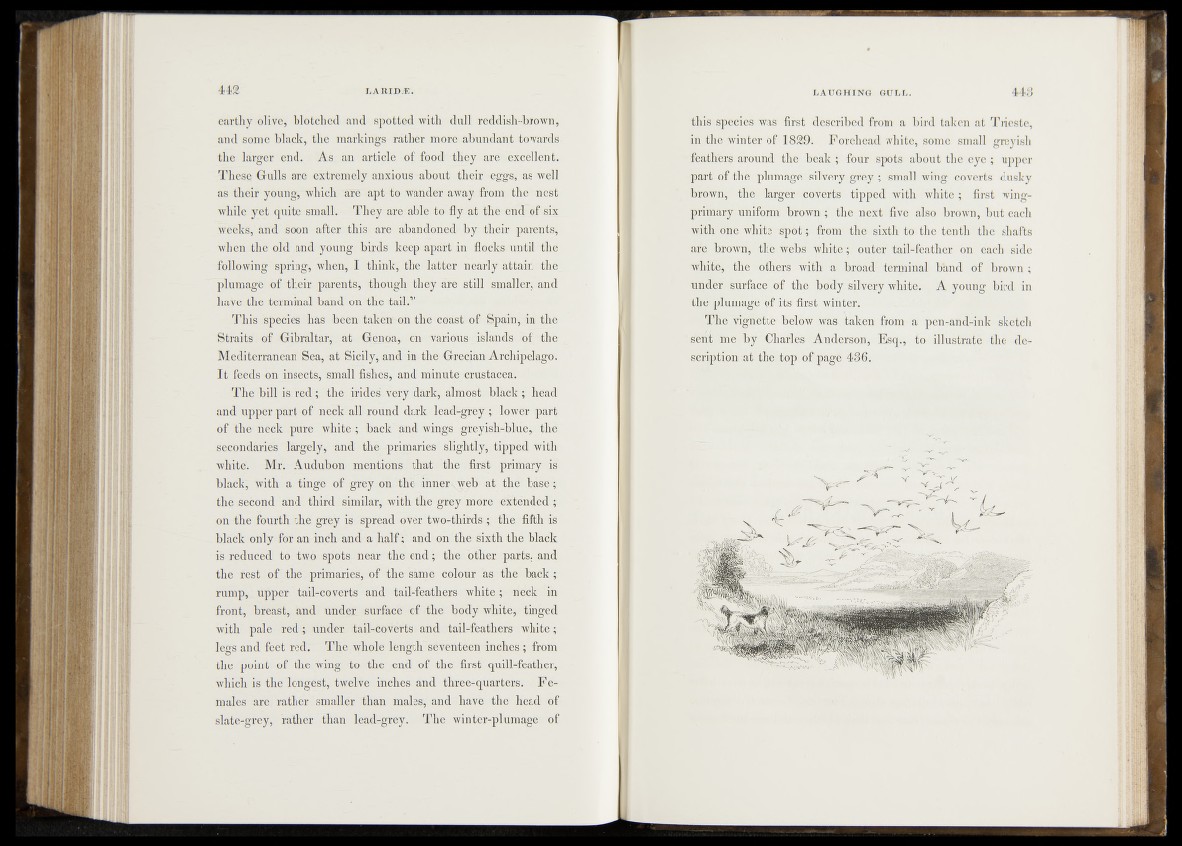
earthy olive, blotched and spotted with dull reddish-brown,
and some black, the markings rather more abundant towards
the larger end. As. an article of .food they are excellent.
These Gulls are extremely anxious -abouti their eggs, as well
as their youngs which üxë apt to wander away from the '• nest
while yet quite small. Theyare. able to fly at the endTof six_
weeks,' and soon after this are abandoned' by thewlfparents,
when the old and young birds keep .apart in flocks until the
following" spring, when, I think, the ^a'fter nearly 'èttaihnthê.
plumage of their parents, though they are still smaller, and
have the terminal band on the tail.1’
This species has been taken- on bbb-coast of Spain, in the
Straits of Gibraltar, at Genoa-, on various islands -:of the
Mediterranean Sea, at Sicily, and in 'the Grecian Archipelago.
I t feeds onJhsects, small fishes, and minute Crustacea.
The bill is.red; the iridesVvery dark, almost black; head
and upper part of neck all round dark lead-grey lower part
of the néck pure white.; back” and wings greyish-blue, the
secondaries largely, and thé primaries'slightly, tipped with
white'. Mr. Audubon mentions that ^the s first primary' is
black, with a tinge of grey on thé ;irmer\W^pat the base ;
the second and third similar, with the grey more extended ;
on -the fourth the; grey is spread over two-thirds; the fifth is
black only for an inch and a half;' and on the sixth the black
is reduced to. two spots-near the end; the other parts, and.
the te s to f. the. primaries, of the same .colour as the back ;
rump,, jupper tail-coverts and tail-feathers white; heck in
front, breast, and under surface of the body white, tinged
with pale red ; under tail-coVèrts and tail-feathers white;
legs and feet red. The whple length seventeen inches; from
the point of the wing to the end of the first quill-feather,
which is the longest, twelve inches and three-quarters. Females
are rather smaller than males, and have the head of
slate-grey, rather than lead-grey. The winter-plumage of
this .species was first described from a bird taken at Trieste,
in the winter of 1829. Forehead white, some small greyish
feath'ers around the beak,; four spots about the ey e; upper
part of titó; plumage silvery grey ; small wing coverts dusky
brown, the, larger coverts tipped with white; first wingprimary
uniform brown; the next five also brown, but each
with one white.flfpo.t; from the sixth to the tenth the shafts
afë brown, the webs white; outer tail-feather on each side
white, the others with a broad terminal b’and of brown;
under- surface of the. body silvery white. A young bird in
the plumage 6.f its first winter.
The vignette below was taken from a pen-and-ink sketch
Stent me-- by Chari.es Anderson, Esq., to illustrate the description
at the top of page 436.